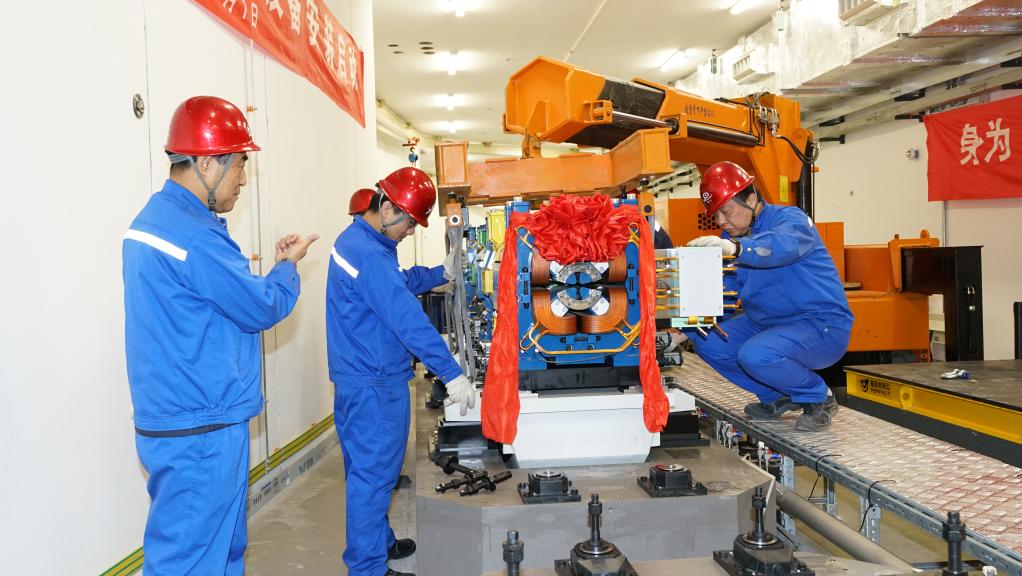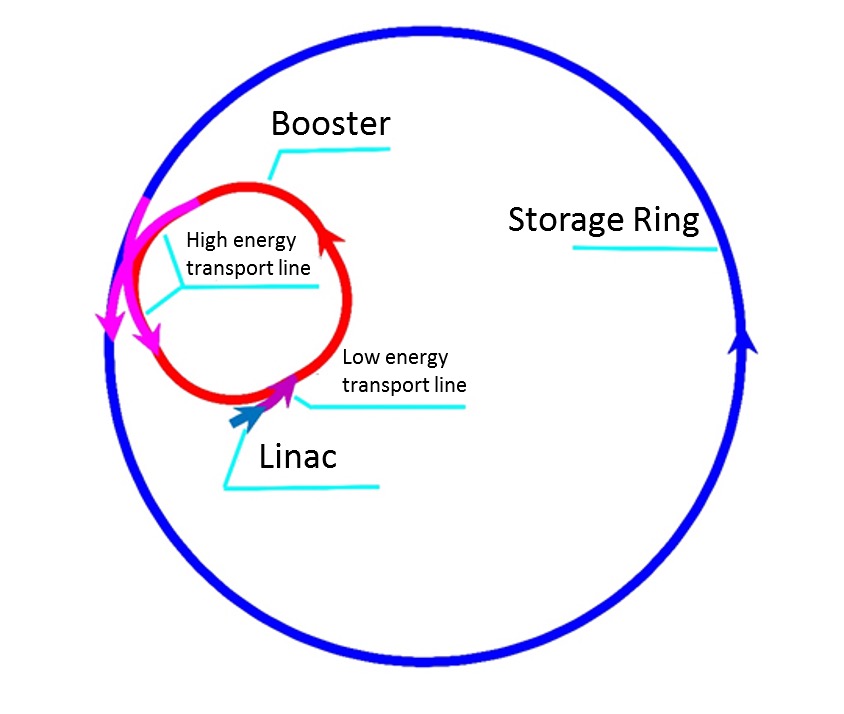China's fourth-generation light source facility installs new unit
China's latest high-energy synchrotron radiation light source facility, the High Energy Photon Source (HEPS), on Wednesday installed its first pre-aligned unit inside the storage ring tunnel, kicking off the comprehensive construction of the HEPS accelerator.
A crucial part of the light source for accelerating electrons and generating synchrotron radiation, the storage ring is designed to achieve ultra-low emittance when charging particle beams and thus requires high precision for the construction.
Scientists and engineers at the Institute of High Energy Physics (IHEP) under the Chinese Academy of Sciences (CAS) have adopted an improved hybrid design of magnet systems and made them standard cells that can be pre-assembled in labs at higher precision.
Workers install a pre-aligned unit inside the HEPS storage ring tunnel, February 1, 2023. /IHEP
At a circumference of 1,360.4 meters, the storage ring would need 288 of such pre-collimated units, according to Qu Huamin, the chief engineer of the project.
The HEPS accelerator consists of three separate accelerators – the storage ring, the booster and the linear accelerator or linac – which together provide high-quality synchronized light for the beamlines.
An illustration of the HEPS accelerator structure. /IHEP
Located in Huairou District to the north of suburban Beijing, the facility takes up an area of more than 20 soccer fields. It is China's first fourth-generation synchrotron source and one of only a handful of such facilities in the world.
Started in 2019 and expected to be completed by the end of 2025, the HEPS can provide 60 to 70 beamlines at high brightness with more than 90 experimental stations.


